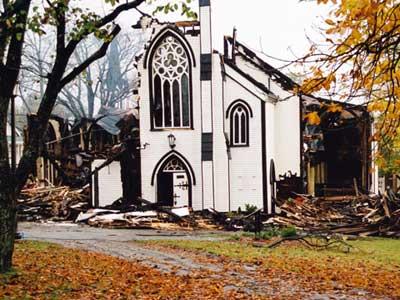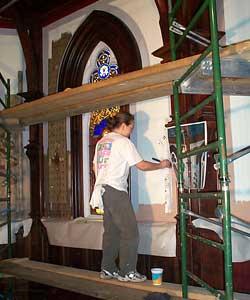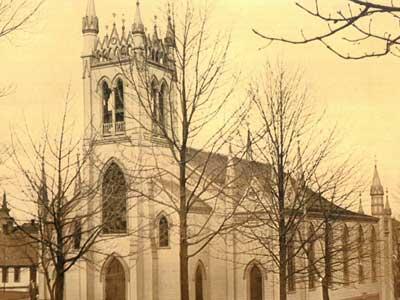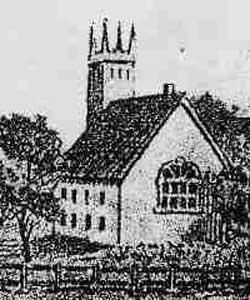St. John's Anglican Church
The second oldest Protestant church in Canada, St. John’s was built in 1753 to serve as a meeting house for its local community in Lunenburg, Nova Scotia. In 1840, Gothic features were added to the white wooden structure, which was enlarged later in the century. The church is one of the best New World examples of the Carpenter Gothic style, in which elements typically rendered in stone are constructed from wood. The church was declared Provincial Heritage Property in 1982, but in 2001, one year shy of its 250th anniversary, a fire devastated the building. Despite the efforts of 16 volunteer fire departments that rushed to the burning church, St. John’s was reduced to a charred skeleton. An entire 50 percent of the structure was completely destroyed and surviving pieces were severely damaged by exposure to flame, smoke, and water.
2004 World Monuments Watch
Though its stability was severely compromised, the church retained its historic landmark status because it seemed possible to replicate the missing half by examining what remained. WMF placed St. John’s Anglican Church on the 2004 Watch, hoping to raise the profile of the site and participate in its restoration. WMF was concerned with reviving and conserving the historic components of the church, specifically the interior decoration. An artistically trained parishioner had painted the dome of the nave, a blue sphere speckled with 700 gilded stars. The murals, dating to 1872, and the chancel walls were also hand-painted, where stencils and gold leaf had been used to create elegant curving patterns. The fire tarnished and discolored much of the remaining decoration, so the surviving pieces needed intricate reconstruction. WMF provided a grant for conserving the church’s unique ornamentation and the project was completed at the end of 2005.
When the 2001 fire decimated the building, the congregation voted by secret ballot whether to construct a modern church on the site, create a memorial park around the ruins, or restore the burnt remains. An overwhelming 91 percent were in favor of reconstruction. Local volunteers cleared debris from the interior and established a Restoration Committee, who in turn obtained a project manager and crew. The proactive, dedicated community in Lunenburg worked with WMF, the Canadian government, and others to accomplish the project. St. John’s Anglican Church now stands whole again, with structural improvements made to the foundations.







